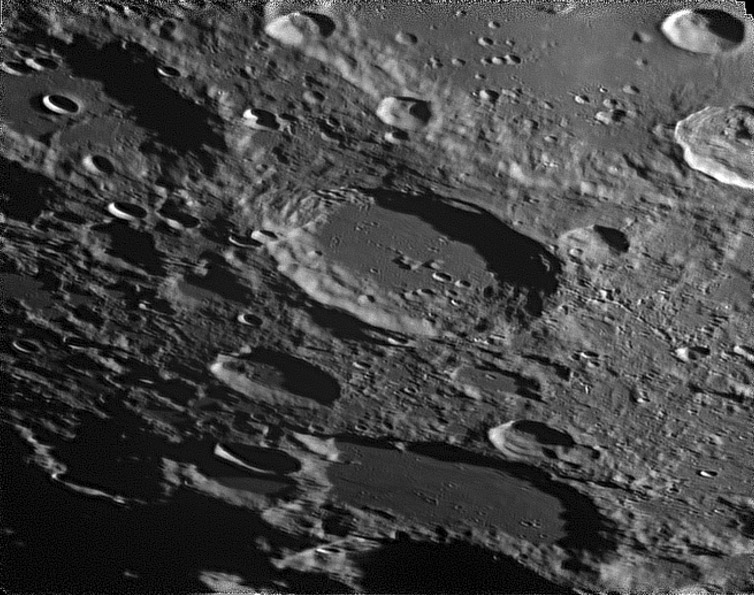May 23, 2012
Filling Holes

image by Israel Tejera Falcón, Vecindario, Las Palmas, Canary Islands, Spain
Would you have the discipline to ignore Clavius and image smaller craters to the south? Israel did and I am glad. Blancanus is in the middle of the field of view and at the bottom is the smooth-floored Klaproth. Both of these had their depths reduced by some material that covered their floors, Blancanus somewhat - its central peak is still visible, and Klaproth much more. The standard, and almost certainly correct, explanation is that fluidized ejecta from the formation of the Orientale Basin filled these floors and other low spots. Using the Path tool of the LRO QuickMap you can determine that the elevation of the floor of Clavius is about 3000 m below the average lunar elevation, and Blancanus is a little deeper at about 3600 m, but Klaproth is much higher at 1800 m. If a uniform rain of ejecta fell across all these craters each would have been shallowed by the same amount. And perhaps that happened. It would mean that each crater had already been modified, or - as is obviously true for Blancanus - that some were younger than others. Probably both these things happened, and like crater rays, the distribution of ejecta was probably not uniform.
Chuck Wood
Technical Details
2012/03/01 UT:21:43. Celestron CPC XLT 11" + Lumenera Skynyx 2-0M + Celestron Ultima x2 + Red Filter
Related Links
Rükl plate 3
Vecindario Observatory
Yesterday's LPOD: Eclipse or ?
Tomorrow's LPOD: Ridged Covering
COMMENTS?
Register, Log in, and join in the comments.



